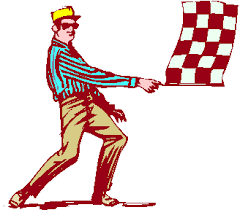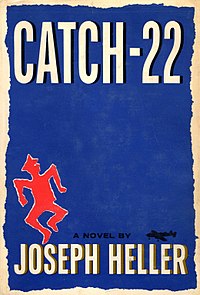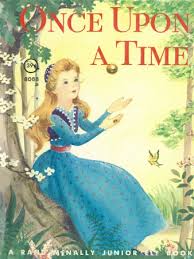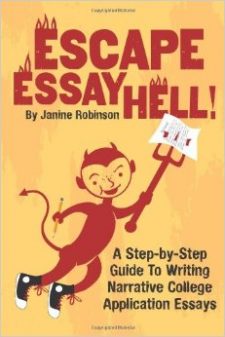by j9robinson | Dec 28, 2011

So you have a rough draft for one of your college essays.
You answered the prompt, read it many times and believe it’s a solid piece of writing.
And you may be right.
But even a solid essay can have one fatal flaw–-it’s boring.
The last thing you want is for the admissions person to toss your well-written essay in the “read later” pile. Here are a couple tips on how to bump it up:
1: Your introduction is the most important part of the essay, since it will either grab the reader or not.
Often, writers start by providing background on their topic and then get to the good stuff. Try to take out the first sentence, or two, and see if you can start farther into your story.
You might have to rewrite it a bit, but often you just don’t need that general background right at the beginning.
It’s best to switch it up and get right to your best example or point, and then provide the background later. If you can start with your most interesting examples or points, you will grab your reader all the faster, and that’s exactly what you want.
EXAMPLE: “When I was in high school, I played the violin in the school band. It was my favorite activity and I never missed a practice or performance. But one day, to my horror, I left my thousand-dollar violin on the school bus…”
You are building up to something exciting here. Try to start right at the heart of the action, the moment you left the violin and your reaction: “As I stepped off the bus, I had the vague feeling I was missing something.
But I was late for my orthodontist appointment, and ran to meet my friends. It was only later that night that it hit me: I left my thousand-dollar violin under the seat.” (And then you can go on to background your history playing the violin, etc.)
(more…)
by j9robinson | Jan 17, 2011

Yesterday, my son sent in the last of his college applications (just hours before many of the Common App Deadlines, might I add). YEA!!! I’m not sure which of us is more relieved. He is the youngest of my two children (my daughter is a sophomore in college), so this is it for me in terms of a personal role in the college application and essay writing process. Of course, I will continue writing this blog and tutoring college-bound students and parents on how to write powerful admissions essays. But boy does it feel great to be on the other side!
If you are still on the dark side, and have either just started thinking about your college essays or still have a couple to polish and send in for 2011, you, too, will someday be on the bright side with my son and I! The one thing you do not want to feel at the point where we are is regret. No matter how stressful and overwhelming the process, it is worth sticking with it to make sure everything is as good as you can make it. Otherwise, what’s the point?
And when you are done, you can step back and let what happens happen. There’s nothing else you can do at that point. But if you are still cranking on these essays and supplements, take a deep breath, collect your thoughts, remember your goals, know that it will be over soon, and JUST WRITE THEM!
Congratulations to all of you who have all your applications in, and best of luck to those of you still plugging away!
by j9robinson | Oct 2, 2010

College Admissions Essays:
How To Fine Edit Your College Application Essay
You are finally finished with your essay. It’s time to copy it into the online application and send it off. You’ve worked hard. Why not make sure it’s fabulous? Follow this checklist to double check that it’s as good as it should be:
- Read your prompt (the question) one more time. Often a prompt will ask you to answer more than one question, or address several points. Make sure you address or answer them all!
- Did you make your point? (Yes, that’s the same thing as your “main point.”) You should be able to state it in a sentence or two. And it should be stated somewhere in your essay as well. If you can’t do this, chances are your essay is too broad, and too broad means boring.
- Do you prove the (main) point you are making in your essay? Did you provide examples as “evidence”?
- When you give examples in your essay, or describe something, are you specific? Use details!
(more…)
by j9robinson | Sep 9, 2010
 It feels like a set-up. First, you are supposed to reveal how wonderful you are in 500 words–about the number you can cram onto a postcard in your teensiest handwriting. Second, you must sell yourself to the college of your dreams—setting yourself apart from the thousands of other equally wonderful students–but appear humble and likeable at the same time. Third, no one has ever taught you how to write this type of essay, called a personal narrative. No one. Ever!
It feels like a set-up. First, you are supposed to reveal how wonderful you are in 500 words–about the number you can cram onto a postcard in your teensiest handwriting. Second, you must sell yourself to the college of your dreams—setting yourself apart from the thousands of other equally wonderful students–but appear humble and likeable at the same time. Third, no one has ever taught you how to write this type of essay, called a personal narrative. No one. Ever!
I call this impossible challenge the Catch 22 of College Essays, at least the part about saying how great you are and staying meek at the same time. You know, make an impression but don’t dare try to impress anyone!! No wonder you are stressed out!!!
The best way to handle this challenge–and I have detailed how to do this all over my blog–is to stick with a story. And it doesn’t have to be a life-changing, mind-blowing event, either. In a weird way that I don’t quite understand, the less impressive the story—the more basic, simple, everyday, mundane it is—the better it will go over. (Learn more about the power of mundane topics.)
Here’s how it works: When you tell your story, you naturally show the reader about yourself. You can avoid that awkward tone of voice that sounds boastful when you describe yourself: I’m a really creative person. I’m really passionate. I’m really great at solving problems. For some reason, when you hear someone say something like that, your first reaction is to think, with great sarcasm, “Oh, you are, are you? Well, good for you!” Whereas, if you just describe the time you built a ten-foot sculpture out of driftwood, feathers, dryer lint and goat hair, the reader might think, without a hint of sarcasm, “Wow, that’s pretty cool. That girl sounds creative.” See the difference? More on Show, Don’t Tell.)
I know I’ve hammered on this, but find your anecdotes, your examples, interesting moments, and just describe what happened—and then examine what you learned from them. It’s hard to go wrong with a story.
Read this post on How to Write an Anecdote to get started telling your best stories!

by j9robinson | Jun 9, 2010

College Application Essays
How to Tell a Story
In journalism, writers often use “anecdotal leads,” that is, starting a news or feature story with a mini-story about a real-life event, one that puts the reader in the middle of the action.
Usually, the anecdote only describes a single moment or incident.
But it’s usually a highlight.
Something happened.
Anecdotes make great introductions for college essays. (I believe there’s no better way to “grab” your reader than to start a story–or your essay–at the most exciting part!) So how do you write an anecdote? Here are some tips.
- Start at the peak of the drama or excitement or conflict. Jump right in! (You will just back up and explain it later.)
- Set the scene: Describe what you see, what you hear, what you feel (both literally and figuratively), what you smell and taste, if relevant. These are called sensory details.
- Use the 5 Ws—Who was involved? What happened. Where did it happen? When did it happen? Why did it happen? ( “H”: How did it happen?)
- Paint a picture with your words, or even better, describe a snippet of video. Zoom in on the action.
- Usually the “action” in your anecdote takes place in a matter of a few minutes.
- Throw in a line or two of dialogue to add drama or move the action forward.
- Use “concrete details.” Be specific! Instead of saying, “The dog ran up to me.” Say, “the neighbor’s bull terrier, Brutus, charged me…”
- In general, use short sentences or mix up the short and long.
- Don’t worry about the background or explaining the larger context of the moment. You can back up and explain that in the next paragraph.
- Borrow techniques you find in fiction writing: concrete details, dialogue, proper nouns, descriptive language, emotion, strong characters, etc.
- Use simple language (avoid SAT vocab. words). Write with nouns and action verbs. Go easy on the adjectives.
- If your mini-story (anecdote) takes three paragraphs to relate, try to go back and see if you can cut it down to two or even one paragraph by keeping only what you need to re-create the moment. You will be surprised how you can shorten them, and actually make them better!
“Writing is easy. All you have to do is cut out all the wrong words.” Mark Twain
Here is another post about how to write anecdotes that you will find very helpful, too!
Check out my new video tutorial on How to Write an Anecdote: Part One!
by j9robinson | Mar 9, 2010
(for this to make sense, you probably need to read the previous post)

Once you get the idea of how this Ladder works, now find some sample college admissions essays that you like. See if the writer shifts back and forth between the specific and the abstract. (Just jot down “show” when they are specific, and “tell” when they get abstract.) In general, the major shifts will occur between paragraphs, but you can vary within sentences as well.
When you go to write your own essay, review your outline and rough draft to make sure you are making the shifts. If you start with a specific incident or describe something, then make sure your next paragraph or so you shift into the abstract to explain it or reflect upon it. Then make sure you shift back to the specifics. And so on. If you start with a broad, general statement or paragraph, make sure you quickly shift into specifics.
In general, the specifics are the juicier writing. Who doesn’t like a good story, or a vivid example or a powerful description? The abstract, however, may take a bit more patience, but that is what gives meaning to your juicy writing.
Sorry, here’s another metaphor: The specifics are like candy, they go down easily and quickly, whereas the abstract is more like ice-cream, yummy but very rich. Too much of either and you can start to feel sick.
It’s really a matter of balance. Too many specifics and you get overwhelmed, buried in the details. Too much abstract discussion and you start to float away in the clouds, and drift off to sleep. The best place is to just keep moving—up and down that ladder.
by j9robinson | Mar 9, 2010

Best Advice On How to
Write a College Application Essay That Rocks!
“The Ladder of Abstraction” is one of my favorite writing tools, especially for writing narrative pieces such as college admissions essays. It is a wonderful way to give structure to an essay without imposing one of those five-paragraph essay formats.
“The Ladder” is a lot simpler than it sounds: Basically, it is making sure you vary your writing to go back and forth between the specific and the abstract.
The “Ladder” image means you go down the ladder into the specifics (the gritty details), and up the ladder into the abstract (the ephemeral clouds). To write well, you need to go up and down constantly.
The shifting between the specifics and the abstract makes your writing engaging and dynamic.
See if this makes more sense:
To be specific, you use details (Remember those “concrete details?”) you describe, you tell stories/anecdotes, you give examples, you use dialogue/quotes, statistics, you use descriptive language to create images, feelings, you use the Who, What, When, Where and Hows, etc.
To be abstract, you explain, you reflect, you interpret, you address the metaphorical or figurative (comparisons, similes, etc.), you are more general, broader, you explore the Why.
The specifics help you make sense of the abstract. The abstract helps you understand the significance of the specifics. To communicate effectively, you need both. To write well, go back and forth between them, zoom in and zoom out, over and over. (There is no strict rule of when you shift in writing, but in general you will see it from paragraph to paragraph.)
Here’s another way to think about the Ladder of Abstraction:
When you are specific, you SHOW the reader what you mean.
When you are abstract, you TELL the reader what you mean.
Going up and down the ladder in writing means you Show in a paragraph, then you Tell in the next paragraph, then you shift back to Showing, then again to Telling, etc. You can start an essay by either Showing or Telling, but make sure to shift right away. In essays, I prefer Showing in the introduction because that’s usually more compelling “grabber” writing.
To throw in yet another metaphor: This process is like using a camera. When you get specific, you zoom in close to your subject so you can “show” the reader all the little details. When you get abstract, you zoom out and take in the larger picture so that you can “tell” the reader what these details mean and why they are important in that broader context.
More later…if you can’t tell, I love this approach! If you want to learn more on your own about how to use the ladder of abstraction in your writing, check out this powerful list of Writing Tools by Author Roy Peter Clark, which includes my favorite writing tips from his amazing writing guide, Writing Tools: 50 Essential Strategies for Every Writer.
Ready to write? Start with my Jumpstart Guide!
by j9robinson | Feb 6, 2010

As promised in my last post, I will share how I start the search for essay topic ideas for my son, who is a junior in high school. The idea is to get some general ideas on our college essay radar. Just jot down areas of interests, activities, experiences, idiosyncrasies, etc. When he’s in a receptive mood (ahem!), I will suggest that he start his own list.
My list so far, written in about five minutes:
Math
Science
Band: French horn
Jazz band: Trumpet
Boy Scouts: camp, backpacking, community service projects
Volleyball: switched from tennis: JV team.
Unicycle
His blog on unusual/ethnic restaurants
Summers in New Hampshire
Fishing
Videogames
Techno Gadgets
Appendicitis
Scuba diving
Tutoring
Costa Rica/Panama/Mexico/Europe family trips
Bites nails
From our lists, my son can start to think about the more specific experiences he has had within these areas as he gets closer to actually writing his essays (probably this summer). What we are looking for, however, are not stories of his general achievement (The Time I Climbed Mt. Whitney or How My Science Invention Won First Place or My Mission Trip to Costa Rica), rather we want to find the smaller, simpler stories (within those events) where he was challenged in some way, and learned and grew from that experience. You will be looking for those memorable moments: “Remember the time you…?”
Meanwhile, just keep your list within reach and add things when they come to mind. Again, relax. There are great stories and essay topics hidden within this list, and they will be in yours, too!
by j9robinson | Sep 26, 2009
 Here’s a little book of essays written by graduates of Berkeley High School, which has a truly diverse student population and moves through about 700 seniors every year. (“As you will see from these stories, some live on their own, while others come from well-off families,” states the foreword.) And they all found compelling stories to tell about themselves. The essays, which targeted mostly California state schools, UCs and select private colleges across the country, were collected for this book by a savvy college counselor there named Ilene Abrams.
Here’s a little book of essays written by graduates of Berkeley High School, which has a truly diverse student population and moves through about 700 seniors every year. (“As you will see from these stories, some live on their own, while others come from well-off families,” states the foreword.) And they all found compelling stories to tell about themselves. The essays, which targeted mostly California state schools, UCs and select private colleges across the country, were collected for this book by a savvy college counselor there named Ilene Abrams.
The book includes the name of the authors of each essay, along with what year they graduated and where they ended up going to college. It’s clear that these students were well-counseled in the process, since almost all the essays met the goal of their advisors: to tell a story “only you can tell.” The stories are rich in details, as diverse in topic, style and tone as their writers, and most tell some type of story. The best thing is that I believe they can help students see that they could write a similar essay!
In case you can’t read the title in the image: The Berkeley Book of College Essays: Personal Statements for California Universities and Other Selective Schools, compiled by Janet Huseby.
And I have to mention my own collection of stand out college application essays: Heavenly Essays.
by j9robinson | May 19, 2009
Here’s an interesting article by the Wall Street Journal about college presidents from 10 prominent colleges and universities (Reed, Carleton, Wesleyan,  U of P, Barnard, etc.) who were asked by the newspaper to answer their own college admissions essay prompts. There’s something satisfying in that…
U of P, Barnard, etc.) who were asked by the newspaper to answer their own college admissions essay prompts. There’s something satisfying in that…
Click here to read article: http://online.wsj.com/article/SB124155688466088871.html










 U of P, Barnard, etc.) who were asked by the newspaper to answer their own college admissions essay prompts. There’s something satisfying in that…
U of P, Barnard, etc.) who were asked by the newspaper to answer their own college admissions essay prompts. There’s something satisfying in that…



